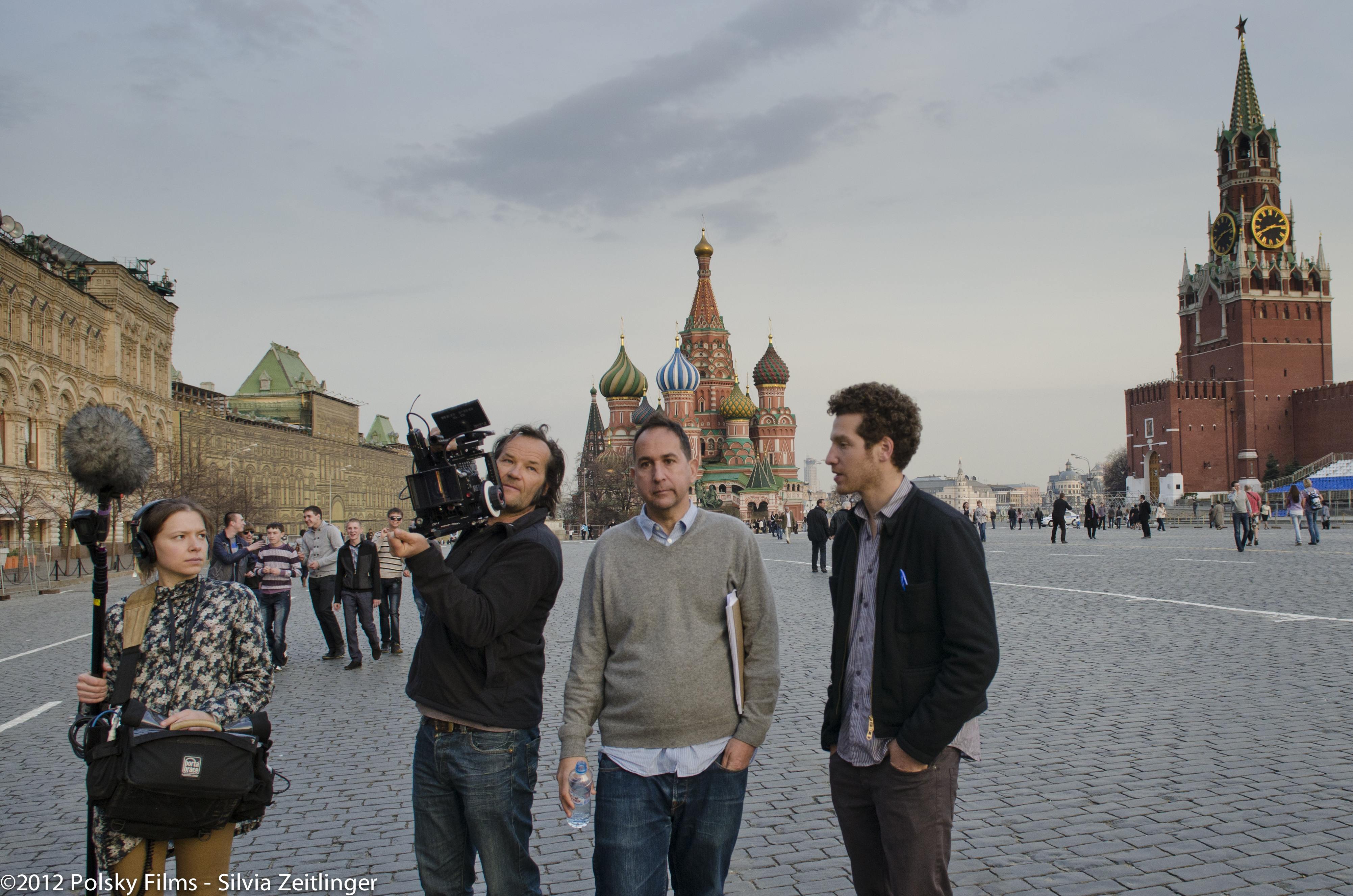The BitTorrent Interview: Gabe Polsky

The director of Red Army, in theaters January 23 talks to us about sport as religion in Soviet Russia.
Gabe Polsky’s acclaimed film, Red Army (Sony Pictures Classics), examines the rise and fall of the Soviet nation through the lens of hockey: Cold War battles fought in stadiums, on ice. The Red Army BitTorrent Bundle, featuring unreleased footage, art, and more is out today. We caught up with Gabe to talk hockey, politics, and the secret life of sports.
For you, the story of Red Army is a personal one. How did you get started in filmmaking? Where did the project begin?
My roommate in college was doing sketch comedy, writing all the time. And when I realized wasn’t going to be a star in the NHL, I started looking into other things. I got interested in what he was doing and thought that I could be a good storyteller and it was inspiring.
“Storytelling is a really powerful thing, if you can reach people and deliver messages that you think are important.”
I started getting experience, moving to Chicago where I did some writing and improv, working on sets, basically trying to absorb as much as I could, until ultimately I moved to LA. I knew that I wanted to start producing and developing projects and learn that way, which is bit unusual. My brother moved out to LA and we started finding material and developing it, trying to get things made.
The first thing that we made was Bad Lieutenant with Werner Herzog and Nic Cage when I was 27 or 28. Being in New Orleans, with Nic and Herzog was eye opening, and then I just kept going. After that, I directed a movie called the The Motel Life with my brother, and after that I wanted to try it on my own and found Red Army. I had been thinking about the ideas that sort of became Red Army for a while, but I had the opportunity to interview these guys and jump off a cliff and just do it. And I just did it.

What made you want to examine Miracle On Ice from the other side; from the perspective of the Soviets?
I just had a hunch. I knew superficially that there was a deep story underneath it and that I would be able to get at something profound. I didn’t know how I was going to get there, but I had a sense of that. You never know with documentaries what you’re going to get, or how, or what the story’s exactly going to be.
“I knew that the story was going to be much more than a history of Soviet hockey. I had no interest in telling that. I had no interest in a hockey movie or a sports film. I wanted to go so much deeper and more profound than that. I went into with that goal and somehow I was able to tell that kind of story.”
I think the Miracle on Ice could be arguable one of the great stories of sports history, but it’s also one of the great tragedies of American sports history. Because the legacy of Soviet hockey ended there and people forgot how incredible the Soviets played and what a revolution it was, how they played creatively. Instead of thinking how to improve the North American game and evolving it creatively, we focused on this underdog story and how great it was.
“It was probably was probably one of the great revolutions in sports history. What they did on the ice was magical. They evolved the sport creatively, but no one remembers that. They dominated the sport for twenty years and no one asks why they did that or how can we improve the American sports game.”
I also found it interesting that although the Soviets lived in a brutally oppressive system, they produced some of the freest hockey that ever existed: fluid and improvisational. In US hockey, it’s a confined, limited game; sort of chasing after the puck, where the Russians passed the puck all over the ice in a possession game.
“I wanted to know about this team and how they lived. The story of the hockey team was a metaphor of the rise and fall of Soviet Union, and I could tell it using hockey as a window.”
The most important thing I realized was that the story of the Soviet team got me curious about my own heritage. My parents are from the former Soviet Union. They grew up in Ukraine and are immigrants.

How open were the players to telling their stories?
They didn’t really know what I was doing. Russians tend to be a bit more closed off and reserved because of partially their experience living in the Soviet Union. It was a challenge, but a good challenge. I wanted to get as many interesting things I could, and get at the Russian soul. Sometimes it’s not what people do say, it’s what they don’t say. You’ll see that in the film.
Hockey is a pretty niche sport, but this story makes people understand the sport in a completely different way.
Why do you think that the story of Red Army and Miracle on Ice are so universal?
Sports is an expression of ideas, and the way that Soviets played was an artistic expression of their nation’s ideas. Sports in the Soviet Union were created specifically to promote communism and Soviet dominance. Stalin created it for that reason. They funded sports school to create athletes that would dominate the West to show their superiority because you can’t find in the Cold War with nuclear weapons.
Sports is one way to communicate ideology, and the way they played hockey was very oppressive. It made people scratch their heads and almost fear them. That was a specific political agenda. The players just wanted to be as great as they could be. I don’t think they had the political ideals, but sports were used as a tool.
What was so interesting is that you had two different styles of play that were so black and white. It was so fascinating and evident. It made an impression on the world; the two opposing clashes of culture and ideology witnessed through sport.

The Soviet sports dominance of that era is something that was never seen before, and probably won’t be seen again in the future. Why did they excel?
The Soviet system allowed their coaches to wield a huge amount of power. They could select athletes, and train them in secluded sports schools on army bases. They would draft players into the army and keep them isolated for eleven months out of the year to train. The Soviet system allowed that. In fact, that’s what the system was all about.
“These players lived and played together. They developed bonds. They became the greatest — together — because the system was set up for that.”
The perception was that the government was enslaving these guys, but when you get to such a high level, the players do it out of their will. They know in order to be great, you have to devote your life. You’re a slave to the sport, regardless.
When it comes to the Russian hockey team, they simply had a head coach who was a visionary. He studied ballet. He studied chess. He studied literature. He was so intelligent and creative, he created a system of hockey and development from scratch. He had the vision for it, created it, and developed these athletes to fulfill that vision. It’s like a blueprint. You can’t build anything without a vision.
As an independent filmmaker, why did you choose to promote the film using BitTorrent Bundle?
BitTorrent Bundle allows us to reach people who we might not be able to reach through traditional means. There’s a number of young users on the platform that we are excited to engage. It’s a unique opportunity to be able to use exclusive materials and additional content from the film to touch those fans.
Get an exclusive first look at Red Army on BitTorrent Bundle. The film hits theaters Friday, January 23.

About BitTorrent Bundle
BitTorrent Bundle is a publishing project made with and for the world’s creative community. Our mission is to help artists connect directly with fans, inside the content they share.
Each BitTorrent Bundle allows artists to distribute content directly to the Internet. And each Bundle comes with a key. Fans can unlock artist content with an email address, or a direct payment to the artist. The idea is to make each song a storefront, and each file more valuable, every time it’s shared. Got ideas for the next BitTorrent Bundle? Hit us up.







